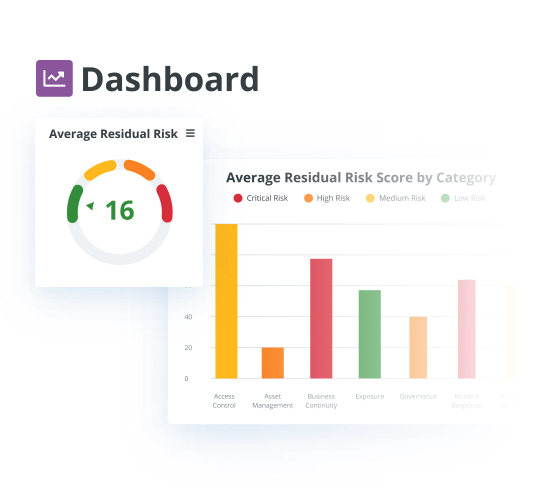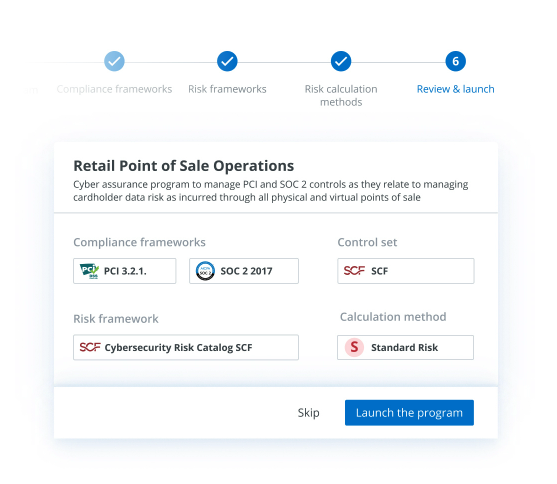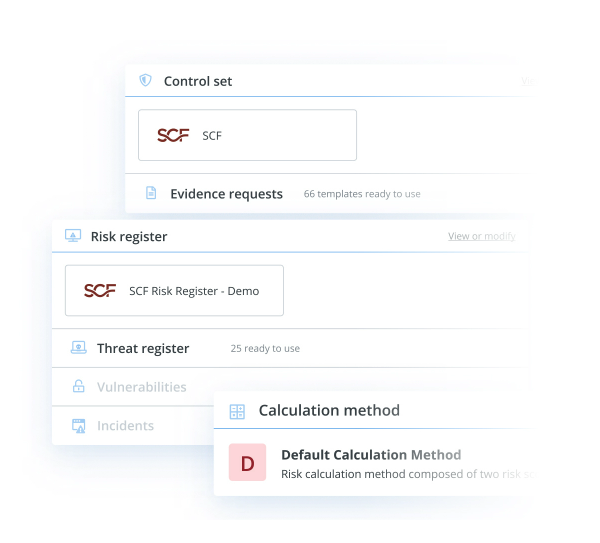Creating a Risk Register Dashboard
Why It's Vital You Create a Risk Register
Any business that wants to stay ahead of disruption and maintain its competitive advantage must know how to manage risk. Whether financial, operational, or reputational, risks come with a high cost. Several companies have gone out of business due to poor risk management.
As a business leader, a project leader, or a risk officer, it's crucial to prioritize risk management to ensure you steer your organization in the right direction. One place to start is to understand the concept of a risk register. We have highlighted more about a risk register in the sections below.

What is a risk register?
A risk register is a vital project management tool used to track identified risks and threats for a particular project. Project managers use risk registers to identify, categorize, analyze and mitigate risks before they cause unexpected results. Regardless of your project's complexity or simplicity, you should create a risk register, as it will always come in handy.
A well-formulated risk register should contain:
- A detailed risk description.
- Probability of occurrence.
- The impact the risk will have on the business if it occurs.
Why is a risk register important?
Besides gathering information about identified risks and hazards, risk registers offer immediate responses and corrective actions to different risk events. They enable a systematic and customized approach to risk management and ensure that any threats are mitigated effectively. Here are the other benefits of a risk register:
- It promotes business continuity and growth. A risk register streamlines your risk management efforts, helping promote business growth and continuity. By anticipating risks and resolving threats before they occur, you can better run your business operations and design controls to mitigate uncertainties.
- It enhances regulatory compliance. A risk register ensures that your business stays up-to-date with current regulations. You'll be able to keep track of new rules and align your business policies and operations accordingly.
| #1 Ranking: Read how InetSoft was rated #1 for user adoption in G2's user survey-based index | Read More |
Five steps to creating a risk register
Before creating a risk register, you need to set your risk management goals and define your hard and soft KPIs. Doing so will ensure you have all the details required to plan and execute your risk management strategies carefully. That said, here are the five main steps you can follow to create a robust risk register.
1. Risk Identification
Risk identification is the process of brainstorming and collecting all the possible risks an organization is exposed to. Every business faces threats, which vary in impact and occurrence probability. Ideally, you want to analyze these risks keenly and professionally. To ensure you are not overlooking any risk event, you must carefully identify all the threats and explore all possible scenarios. The goal of risk identification is to capture all the possible risk events and work on their solutions. If a risk has not been identified during this phase, tracking and responding to it will be more challenging. Risk managers should therefore involve all the stakeholders in identifying the risks that could jeopardize the project.
2. Risk Description and Documentation
After identifying the risks likely to occur throughout the project, you want to describe them accordingly. While describing the risks, it's advisable to capture all the critical details, such as the risk's impact level, the likelihood of occurrence, history of relevant risk events, potential mitigation measures, etc. These details should be well documented to allow for efficient risk categorization. You can describe project risks into manageable groups to make your risk management more effortless. For instance, you can settle on three or four categories instead of categorizing the identified risks into ten or fifteen groups. This will make risk monitoring more convenient.
 |
Read how InetSoft saves money and resources with deployment flexibility. |
3. Risk Estimation
Risk estimation involves characterizing risk events to develop an awareness of hazards and inform risk response and prioritization. The process relies on a proper understanding of the various risks and requires a thorough assessment to ensure the implementation of appropriate response measures. With proper risk estimation, project managers can further identify and group those risks requiring the same response or mitigation measures. This allows for proper resource utilization and ensures risks are addressed before they cause problems.
4. Risk Response Planning
Risk response planning is one of the most critical parts of creating a risk register. A risk response plan is a detailed step-by-step procedure detailing how to mitigate or remediate known risks. Your business risk response plan should be precise and to the point. The risk response plan should also consider the implementation strategies and inconveniences, if any.
When creating a risk response plan, you want to bring together all the subject experts and ensure collaboration in implementing the various risk response strategies. The goal is to exhaust all the possible risk mitigation measures and ensure effective implementation.
5. Risk Prioritization and Ownership
Some risks have a more significant impact than others, and their occurrence probability also varies. If you are in charge of a project, you should prioritize those risks with a higher likelihood of occurring and those with the most significant impact. However, this doesn't mean neglecting the frequent risk events with minimal impact. The goal is to be reasonable in allocating resources to various risk events.
Another vital aspect in the risk management field is risk ownership. While creating a risk register, you want to define the risk owners and assign duties to each based on their skills and level of performance. Risk ownership enhances accountability and increases the likelihood of risk management success.

How ZenRisk Helps Create a Risk Register
As the business and corporate risk landscape continues to evolve, so does the technology behind risk management. ZenRisk is one of the automated risk management solutions used by enterprises of all sizes to gain actionable insights into business processes. It's a critical tool that can help identify, evaluate and mitigate IT and cybersecurity risks.
When used right, ZenRisk gives you the added visibility needed to stay on top of business threats. Here are ZenRisk's key capabilities that make it a must-have risk management tool across industries:
- Guided set-up. This eliminates hours spent identifying and mapping risks and best controls. The guide packs all the information you need to speed up onboarding and better control and mitigate risks.
- A rich content library. With ZenRisk, you gain access to a rich, built-in content library with the perfect mix of threats and controls. There's also a wide range of industry-standard scoring methods, security frameworks, and risk scores, which can streamline your risk management efforts.
- Cross-object risk scoring. ZenRisk enhances real-time and continuous risk score monitoring for all the identified risks. This increases accuracy and boosts risk response efforts. ZenRisk also allows for quick and convenient communication among teams through instant notifications about the changes in risk levels, controls needed, and other critical information.
- Automated workflows. One of the benefits of ZenRisk is the high-level automation of tasks, from risk scoring and monitoring to response. With this level of automation, you free your team from tedious and time-consuming manual work. You also optimize your talent, boosting productivity and adding value to your entire organization.
- Smart insights. ZenRisk provides detailed reports and dashboards with a summary of risk events, risk levels, and controls. With these details at hand, you can effectively communicate and mitigate risks.

Get Started Today
Managing risk is critical to business success and takes focused and deliberate efforts to do it right. With modern technology, risk management has become automated, enhancing accuracy and efficiency. Instead of manually creating a risk register, you want to use automated solutions to streamline the entire risk management process. Still, technology isn't the silver bullet. You need the right mix of qualified talents to ensure technology is maximized to yield the expected results.